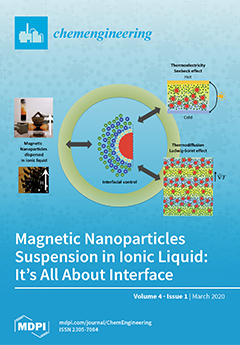Transition metal sulfide catalysts are actually the most performing catalytic materials in crude oil hydrotreating (HDT), for energetic purposes. However, these systems suffer from several drawbacks that limit their exploitation. Aiming to meet the even more stringent environmental requirement, through a remarkable improvement
[...] Read more.
Transition metal sulfide catalysts are actually the most performing catalytic materials in crude oil hydrotreating (HDT), for energetic purposes. However, these systems suffer from several drawbacks that limit their exploitation. Aiming to meet the even more stringent environmental requirement, through a remarkable improvement of HDT performance in the presence of refractory feedstock (i.e., in terms of activity, selectivity, and stability), a deeper knowledge of the structure–activity relationship of catalysts must be achieved. Therefore, in this study, CoMo/γ-Al
2O
3 and NiMo/γ-Al
2O
3 catalysts were characterized and tested in the o-xylene hydrogenation model reaction, assessing the influence of both support acidity and catalyst acid strength on reaction pathway by employing γ-Al
2O
3 and Y-Type zeolite as acid reference materials. A clear relationship between concentration and strength of acid sites and the performance of the catalytic materials was established. Cobalt based catalyst (CoMoS
x) proves a higher acidic character with respect to Nickel (NiMoS
x), prompting isomerization reactions preferentially, also reflecting a greater o-xylene conversion. The different chemical properties of metals also affect the catalytic pathway, leading on the CoMoS
x system to the preferential formation of p-xylene isomer with respect to m-xylene.
Full article





